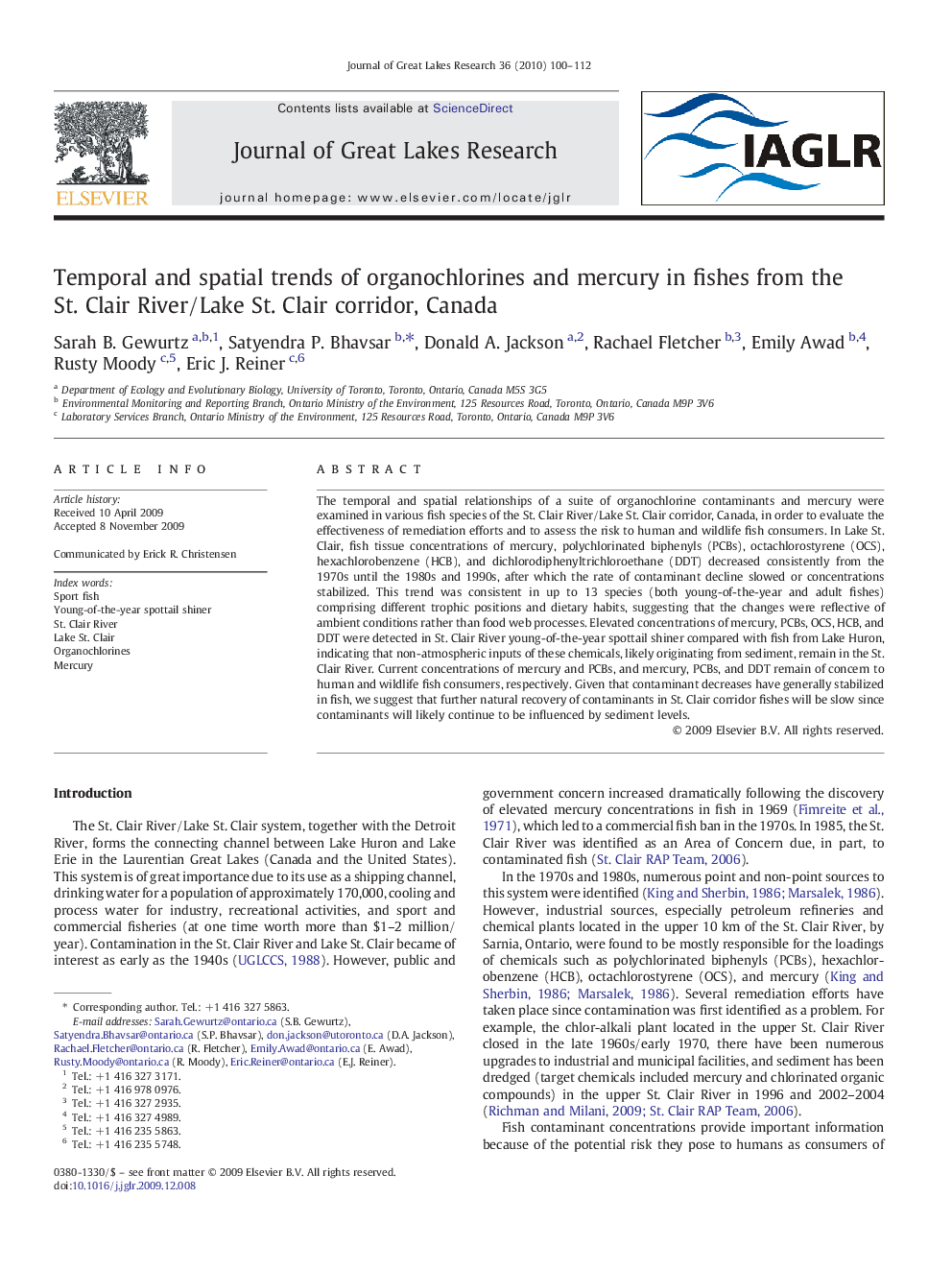| Article ID | Journal | Published Year | Pages | File Type |
|---|---|---|---|---|
| 4399048 | Journal of Great Lakes Research | 2010 | 13 Pages |
The temporal and spatial relationships of a suite of organochlorine contaminants and mercury were examined in various fish species of the St. Clair River/Lake St. Clair corridor, Canada, in order to evaluate the effectiveness of remediation efforts and to assess the risk to human and wildlife fish consumers. In Lake St. Clair, fish tissue concentrations of mercury, polychlorinated biphenyls (PCBs), octachlorostyrene (OCS), hexachlorobenzene (HCB), and dichlorodiphenyltrichloroethane (DDT) decreased consistently from the 1970s until the 1980s and 1990s, after which the rate of contaminant decline slowed or concentrations stabilized. This trend was consistent in up to 13 species (both young-of-the-year and adult fishes) comprising different trophic positions and dietary habits, suggesting that the changes were reflective of ambient conditions rather than food web processes. Elevated concentrations of mercury, PCBs, OCS, HCB, and DDT were detected in St. Clair River young-of-the-year spottail shiner compared with fish from Lake Huron, indicating that non-atmospheric inputs of these chemicals, likely originating from sediment, remain in the St. Clair River. Current concentrations of mercury and PCBs, and mercury, PCBs, and DDT remain of concern to human and wildlife fish consumers, respectively. Given that contaminant decreases have generally stabilized in fish, we suggest that further natural recovery of contaminants in St. Clair corridor fishes will be slow since contaminants will likely continue to be influenced by sediment levels.
